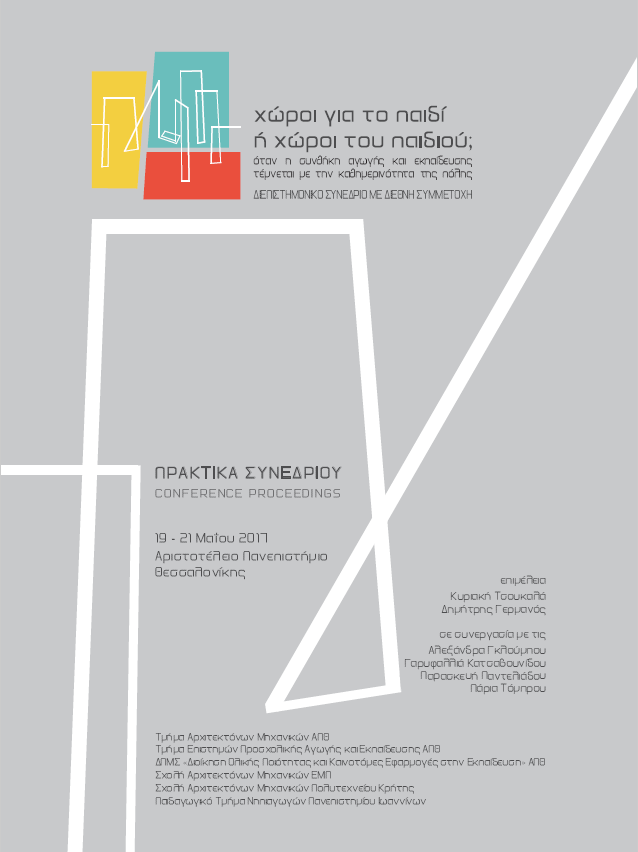Οι μαθητές χρωματίζουν το σχολείο με βοηθό τον Deming

Περίληψη
συγχρόνων παιδαγωγικών, διδακτικών, πολιτιστικών, κοινωνικο-οικονομικών και τεχνολογικών απαιτήσεων, αποτελεί επιτακτική ανάγκη, καθώς ενθαρρύνεται η δημιουργικότητα, βελτιώνεται η διαδικασία της μάθησης και ενισχύεται η αυτομάθηση. Η εκπαιδευτική διαδικασία και η συνακόλουθη ανάπτυξη του παιδιού λαμβάνουν χώρα σε φυσικό, κοινωνικό, πολιτιστικό και ψυχολογικό περιβάλλον. Ένα επαρκές περιβάλλον είναι άκρως απαραίτητο για μια εποικοδομητική μάθηση. Το περιβάλλον είναι ένας συνδυασμός στοιχείων, όπως ο φωτισμός, ο ήχος, οι όγκοι, που, μαζί με το χρώμα, επηρεάζουν ή ολοκληρώνουν τις εμπειρίες των υποκειμένων μάθησης. Η παρούσα εργασία ερευνά τη σχέση μεταξύ του χρώματος και της μαθητικής συμπεριφοράς και έχει ως στόχο να καθορίσει τι πρέπει να προληφθεί ή να αντιμετωπιστεί, για να δημιουργηθεί το καλύτερο δυνατό περιβάλλον μάθησης. Ταυτόχρονα, καθώς ο χαρακτήρας της σύγχρονης εκπαίδευσης τείνει να καταστεί επενδυτικός, παρουσιάζεται υποτυπωδώς στα επιμέρους στάδια της προτεινόμενης παρέμβασης ο ‘Κύκλος του Deming’, ενός εργαλείου της Διοίκησης Ολικής Ποιότητας, προκειμένου να γίνουν αντιληπτές βασικές έννοιες της οργάνωσης. Προτείνονται στρατηγικές για το σχεδιασμό περιβαλλόντων που συνδράμουν τη μάθηση, καλλιεργούν δεξιότητες, μειώνουν το άγχος και διευκολύνουν την μαθητική εστίαση στο παρεχόμενο μορφωτικό προϊόν. Ταυτόχρονα, εξετάζεται η σημασία του χρώματος στο δομημένο περιβάλλον και η επίδρασή του στους χρήστες.
Λεπτομέρειες άρθρου
- Ενότητα
- ΘΕΜΑΤΙΚΗ IV Εισαγωγή καινοτομιών για αναβάθμιση του εκπαιδευτικού περιβάλλοντος
Οι συγγραφείς των άρθρων που δημοσιεύονται διατηρούν τα δικαιώματα πνευματικής ιδιοκτησίας επί των άρθρων τους, δίνοντας το δικαίωμα της πρώτης δημοσίευσης.
Άρθρα που δημοσιεύονται διατίθενται με άδεια Creative Commons 4.0 και σύμφωνα με την άδεια μπορούν να χρησιμοποιούνται ελεύθερα, με αναφορά στο/στη συγγραφέα και στην πρώτη δημοσίευση για μη κερδοσκοπικούς σκοπούς.
Οι συγγραφείς μπορούν να καταθέσουν το άρθρο σε ιδρυματικό ή άλλο αποθετήριο ή/και να το δημοσιεύσουν σε άλλη έκδοση, με υποχρεωτική την αναφορά πρώτης δημοσίευσης στα πρακτικά.
Οι συγγραφείς ενθαρρύνονται να καταθέσουν σε αποθετήριο ή να δημοσιεύσουν την εργασία τους στο διαδίκτυο πριν ή κατά τη διαδικασία υποβολής και αξιολόγησής της.


